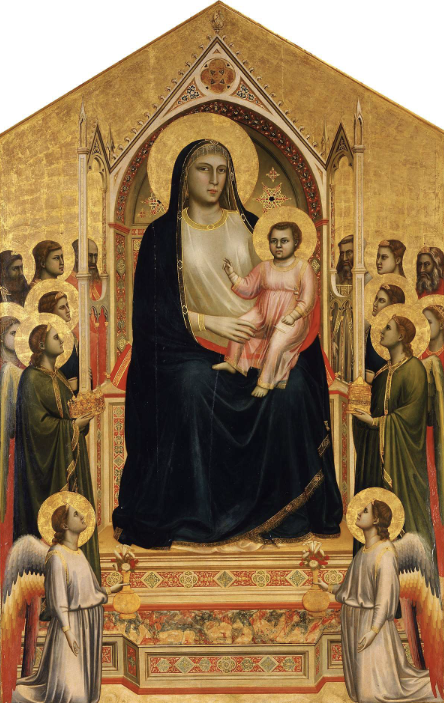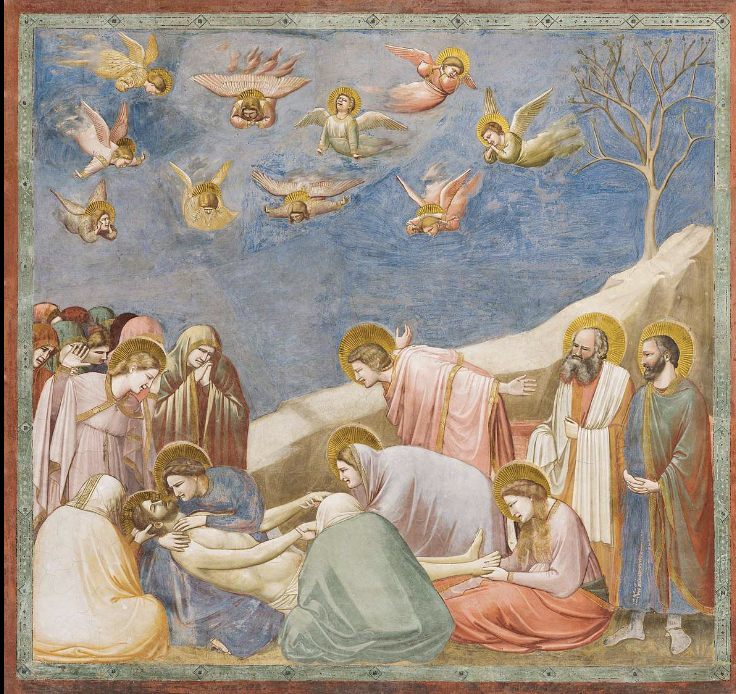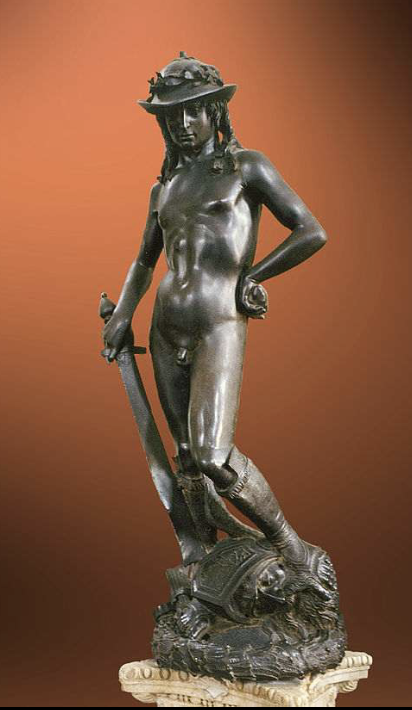Proto- and Early Renaissance
1/20
There's no tags or description
Looks like no tags are added yet.
Name | Mastery | Learn | Test | Matching | Spaced |
|---|
No study sessions yet.
21 Terms
Proto- Renaissance time.
1200-1300s
What were the themes of the Proto- and Early Renaissance?
cultural and intellectual changes
back to Italy
Italian artists and thinkers began experimenting with ideas, naturalism, more volume and three dimensionality
experimentation with individual expression (more in Renaissance)
figures are more human by showing emotion and gesture
interaction between figures
experimenting with classical antiquity
Why did Proto- Renaissance happen in the 13th and 14th century?
Italy was a collection of city states
Florence. Sienna, etc.
city states were booming thanks to trade and banking
they became proud of their identities and wanted to use art to celebrate the city itself and express their pride
What was the rise of powerful merchant classes? What did they cause?
weren’t kings or nobles but instead wealthy bankers and businessmen
acted as patrons of the arts
purchased and commissioned art works
example of the de’ Medici family
What were the early stirrings of Humanism?
images were more human and grounded in the real world
turning back to classical antiquity
more art, architecture but also literature and language
art begins to pay more attention to human emotion and earthly settings
What was literacy and language like in proto- Renaissance?
vernacular language
more and more people learning to read
not reading in Latin but in vernacular
more accessible to the general public
people wanted to see these narratives in art (narrative driven artwork)
What did the Black Death cause for early Renaissance art?
bubonic plague
killed up to 60% of population
stimulated the art market because people were more eager to commission religious devotion artworks

Giotto di Bondone, Madonna Enthroned, Florence, Italy, ca. 1310
more naturalism
revived classical naturalism
human body with substance and weight, facial features, emotion, interaction between figures depicted more realistically
figures placed in amore earthly setting (figures are touching ground not floating)
Madonna’s body is present behind drapery
thrown is architectural looking
What is Fresco? What does it or doesn’t it allow for?
used in Renaissance art
painting on wet plaster
brought back medium of many Greek and Roman art (connotations to Greco-Roman antiquity)
challenging to work with
must paint quickly
allows for achievement of naturalism
can’t do tonal gradation
What is foreshortening?
use of perspective to represent an object that appears perpendicular to the plane
as if images or figures are coming out at you
What is chiaroscuro?
use of light and dark values to model figure to give mass and volume
adding shadows and highlights strategically

Giotto, Lamentation, Scrovegni Chapel, Padua, Italy c. 1305-1306
taking Christ down from cross
three dimensional background (foreground, middle-ground, background)
overlap of figures
clear blue sky; rocks and trees (more earthly)
some foreshortening
de-flattening of figures
human emotion depiction
real people with individual features
emotional portraits of people
images are more relatable and can be empathized with
observable suffering, sadness, grief, frustration on different characters
Individualization to humans in religious scenes
What were civic artworks of the Proto- Renaissance? (Especially in reference to Sienna and give example)
Sienna was a powerful city state
thought of itself as rival of Florence
civic artwork for Palazo Pubblico
commissioned artwork for public halls and spaces
e.g. Lorenzetti’s Effects of Good Government in the City and in the Country
What were 3 main transition points for Proto- Renaissance to Renaissance proper?
observation to system
classical revival becomes central
rise of Humanist patronage
Early Renaissance time.
1400-1490
What was a major development during early renaissance?
one point linear perspective
using mathematical tools
systemic way of depicting natural art
observation → system
What was the rise of Humanist patronage?
artists working hand in hand with humanist scholars to achieve naturalism
Medici family commissioning art to display civic themes, humanism, rationality/beauty
changes tone and subject matter of art
Who was Brunelleschi and what was he known for?
one of the fathers of early Renaissance
formulated one point linear perspective
system and set of rules that artists could use
using horizon line, vanishing point and orthogonals
built Duomo in Florence
What did one point linear perspective suggest about themes in the early Renaissance?
combining painting and maths to draw realistic buildings and humans
organized space in a logical way
reason and logic to organize canvas
system could be taught/widely spread to other artists
What is a niche?
a domed spatial space on outside of buildings
assigned niches to specific guilds/trade organizations
sculpture that is independent from architecture
separating sculpture from architecture
sculpture becomes more autonomous

Donatello, David, bronze, c. 1435-1440, Florence
he revived classical sculpture
re-introduced free standing architecture
revived free standing nude sculpture
vs. in Medieval ages figures were clothed especially with start of Christianity and modesty
he is youth, slender, less pronounced
pride in representing David not as a muscular, monumental athlete
David outsmarted Goliath and defeated Goliath not only on strength alone
appealed to the Humanists
commissioned by Medici family